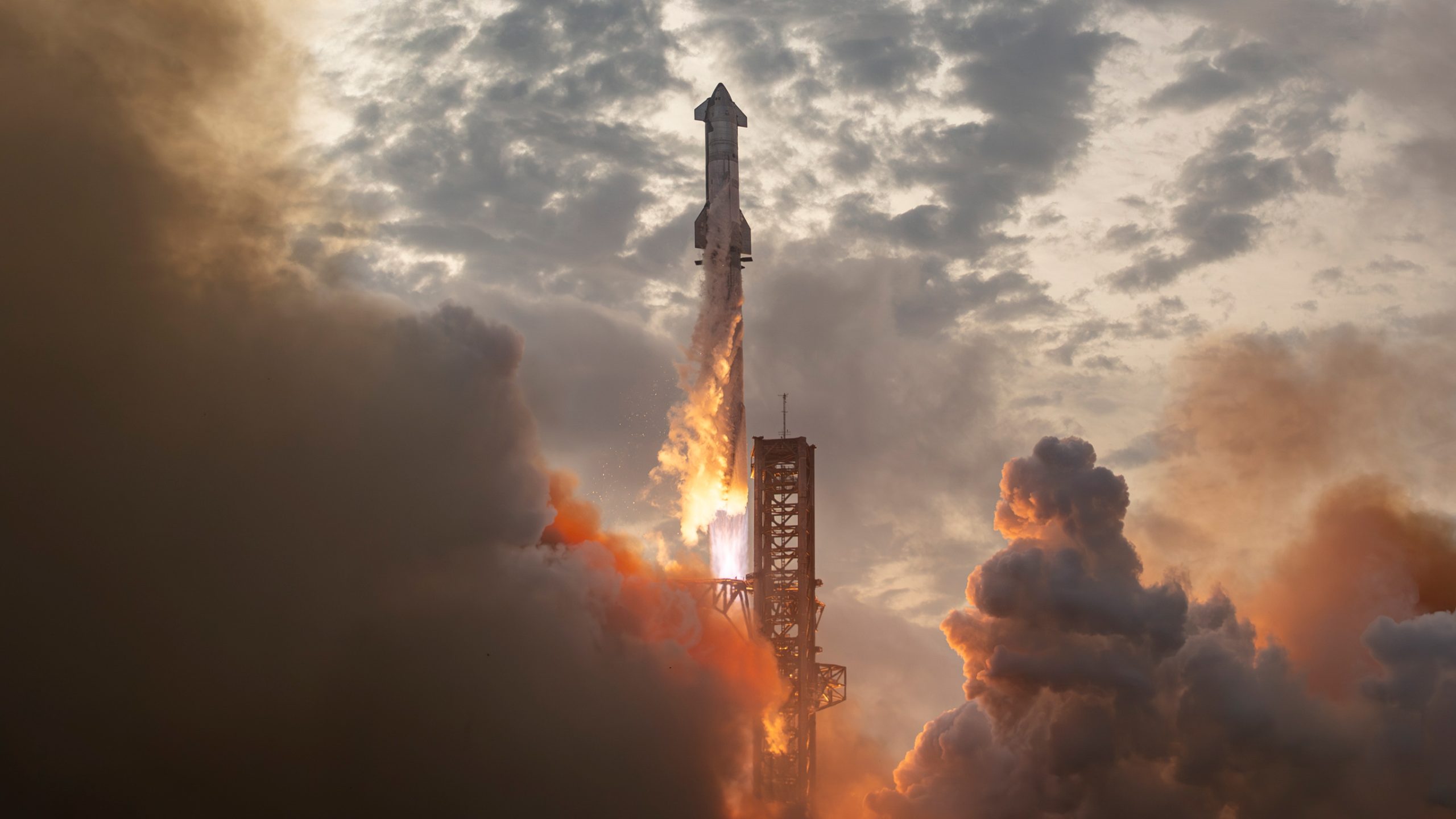
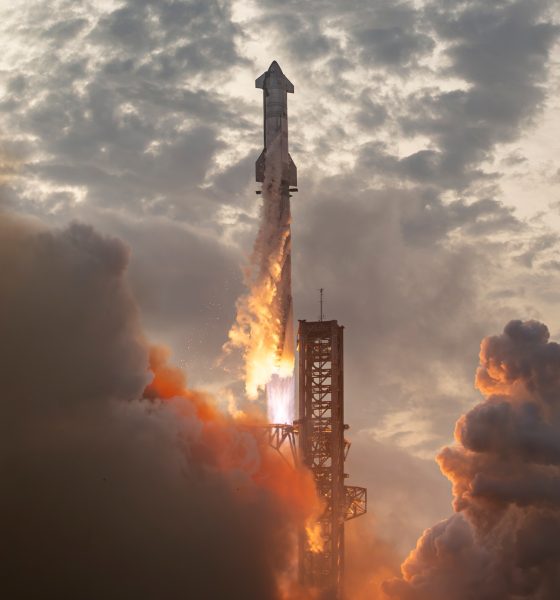
News
SpaceX reveals new details on Starship’s third test flight
SpaceX has revealed some new information regarding the third test flight of its massive Starship rocket.
The flight, which took place from Starbase, Texas, yesterday morning at 8:25 am CT, capitalized on previous test flights and accomplished a host of new objectives.
All 33 Raptor engines lit in a staggered sequence, and once throttled up, the world’s biggest rocket took flight for the third time.
All 33 Raptor engines burning (Credit: SpaceX)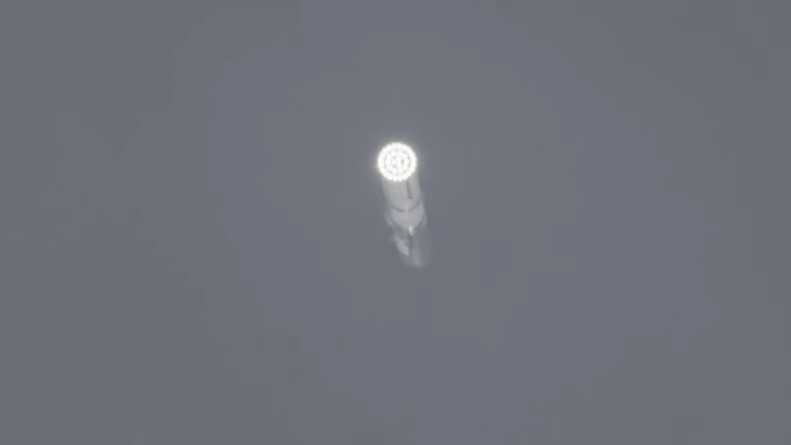
As Starship climbed into the South Texas skies, the 33 engines continued to operate nominally until the hot stage separation, in which 30 of Super Heavy’s engines shut down as Starship lit its 3 sea-level and 3 vacuum Raptor engines and continued to space.
For the first time, the Super Heavy first stage, Booster 10, successfully performed a boost back burn and aimed for a splashdown just East of the launch pad in the Gulf of Mexico. According to the data displayed on the webcast, the booster reached a peak speed of 5750 km/h and an altitude of 106 km.
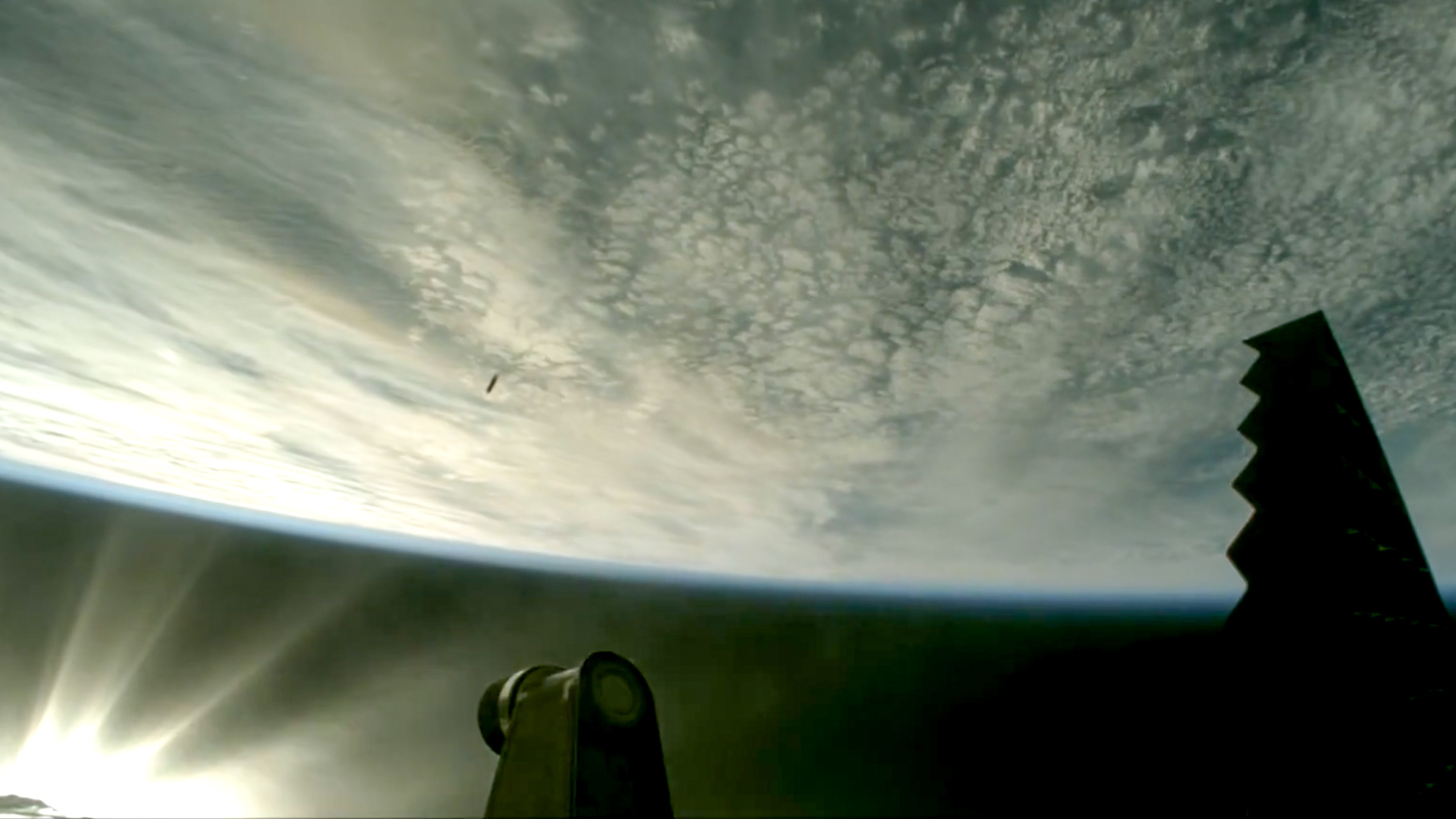
Super Heavy performing the boost backburn while Starship heads down range (Credit: SpaceX)
Unlike the Falcon 9, the Super Heavy is so big it does not need to do an entry burn however in one of the last bits of data available on the webcast, it showed the booster attempted to begin its landing burn around 1 km in altitude with only 3 engines lighting and 2 shutting off almost immediately after.
SpaceX has since confirmed that Booster 10 experienced a rapid unscheduled disassembly just 462 meters above the water’s surface, and it is likely that what remained of the booster hit the water at nearly the speed of sound.
While Booster 10 was meeting its fate in the Gulf of Mexico following a great performance, Ship 28 continued to burn all 6 of its Raptor engines and completed its first full-duration burn, inserting itself into its proper sub-orbital trajectory.
Starship just after Raptor shutdown (Credit SpaceX)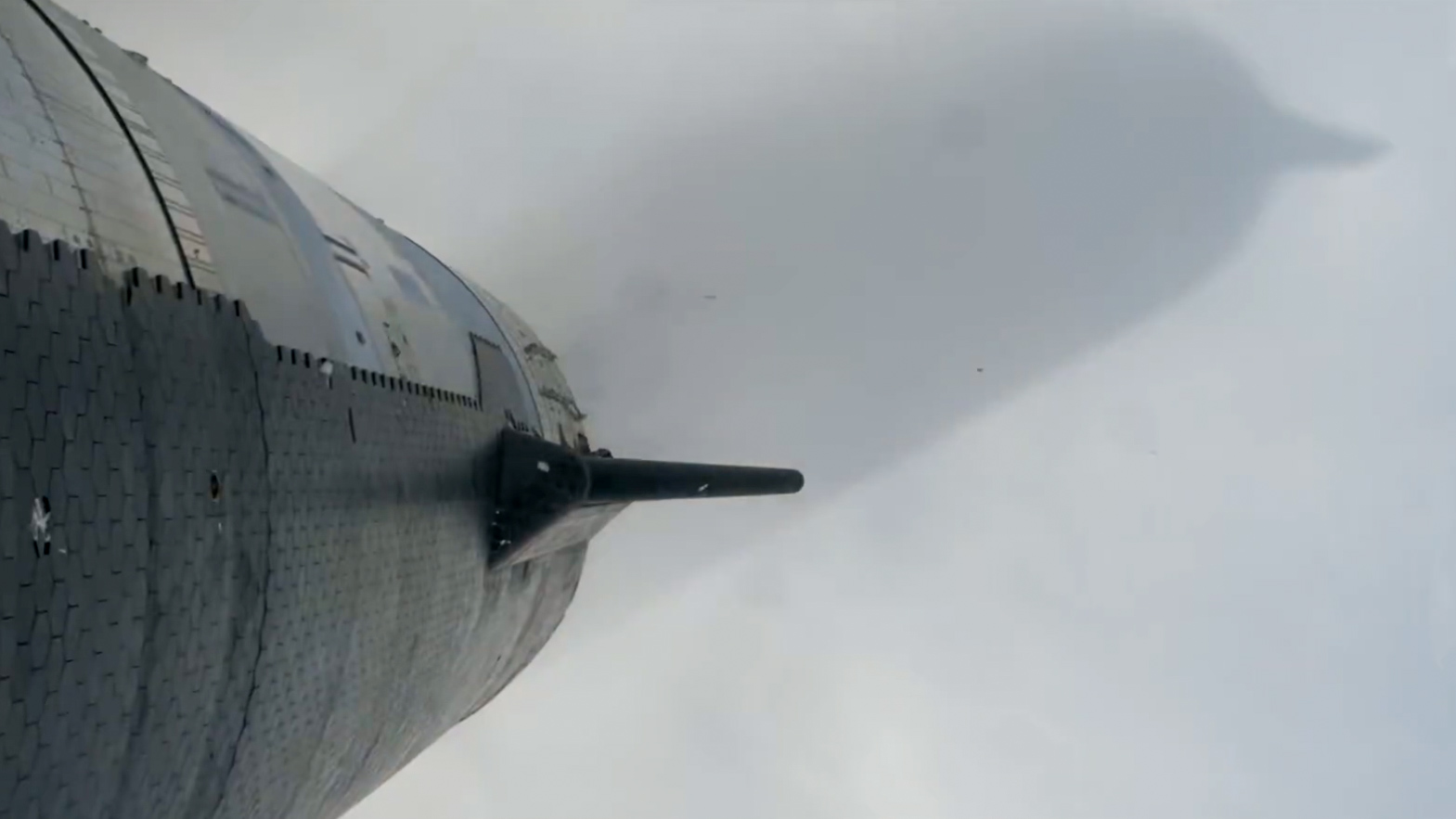
Ship 28 then began its coast phase and started a series of tests. The payload bay door, aka pez door, designed to eventually eject the full-size Starlink satellites, was first commanded to open 12 minutes into the flight. SpaceX has yet to confirm whether it managed to fully open/close the door. At 30:18 into the mission, the door appears to have dislodged into the payload bay, and we no longer got any live views inside the ship.
The next task was to re-light the first-ever Raptor engine in space, but due to the vehicle’s roll rates, SpaceX decided to postpone this until a future flight.
Ship 28 then began atmospheric entry, but the ship seemed to be partially out of control with the spin and eventually began to build up plasma. The heat shield was only half exposed, and the rest was bare stainless steel, taking the brunt of the forces of re-entry.
Ship 28 begins atmospheric re-entry (Credit SpaceX)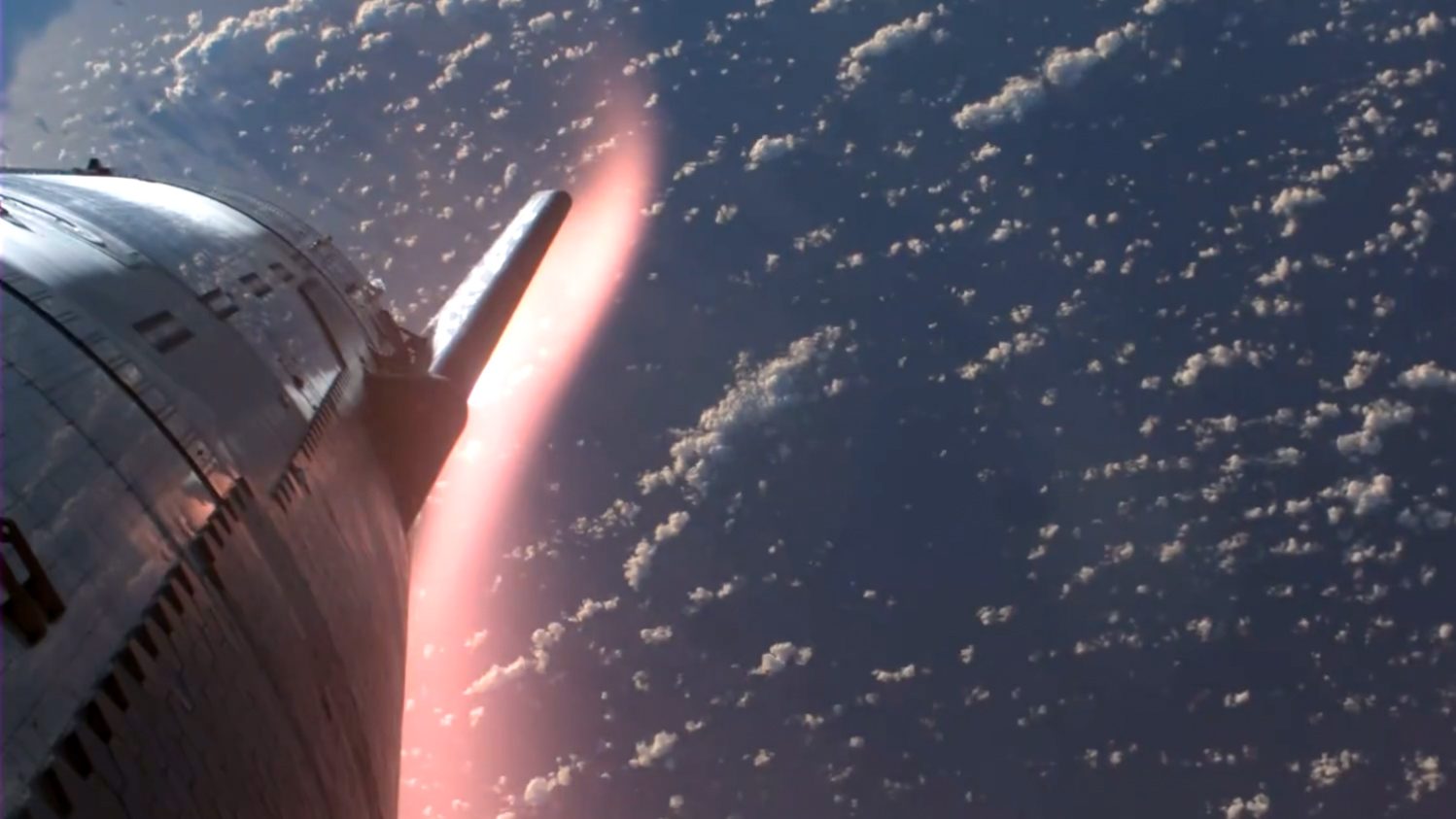
Thanks to Starlink terminals on board, SpaceX was able to provide incredible live views from a camera located on one of Starship’s flaps. The plasma began as a faint pink glow before rapidly growing and enveloping the vehicle while still maintaining a good data connection which has never before been possible.
Overall, SpaceX made many great advancements on this third test flight and will look to complete all of these on the fourth test flight, including a smooth splashdown of the Super Heavy booster and successful re-entry through the atmosphere for Starship.
When do you think the 4th test flight will occur, and will they fix the issues encountered during flight 3?
Questions or comments? Shoot me an email at rangle@teslarati.com, or Tweet me @RDAnglePhoto.

News
Tesla FSD fleet is nearing 7 billion total miles, including 2.5 billion city miles
As can be seen on Tesla’s official FSD webpage, vehicles equipped with the system have now navigated over 6.99 billion miles.

Tesla’s Full Self-Driving (Supervised) fleet is closing in on almost 7 billion total miles driven, as per data posted by the company on its official FSD webpage.
These figures hint at the massive scale of data fueling Tesla’s rapid FSD improvements, which have been quite notable as of late.
FSD mileage milestones
As can be seen on Tesla’s official FSD webpage, vehicles equipped with the system have now navigated over 6.99 billion miles. Tesla owner and avid FSD tester Whole Mars Catalog also shared a screenshot indicating that from the nearly 7 billion miles traveled by the FSD fleet, more than 2.5 billion miles were driven inside cities.
City miles are particularly valuable for complex urban scenarios like unprotected turns, pedestrian interactions, and traffic lights. This is also the difference-maker for FSD, as only complex solutions, such as Waymo’s self-driving taxis, operate similarly on inner-city streets. And even then, incidents such as the San Francisco blackouts have proven challenging for sensor-rich vehicles like Waymos.
Tesla’s data edge
Tesla has a number of advantages in the autonomous vehicle sector, one of which is the size of its fleet and the number of vehicles training FSD on real-world roads. Tesla’s nearly 7 billion FSD miles then allow the company to roll out updates that make its vehicles behave like they are being driven by experienced drivers, even if they are operating on their own.
So notable are Tesla’s improvements to FSD that NVIDIA Director of Robotics Jim Fan, after experiencing FSD v14, noted that the system is the first AI that passes what he described as a “Physical Turing Test.”
“Despite knowing exactly how robot learning works, I still find it magical watching the steering wheel turn by itself. First it feels surreal, next it becomes routine. Then, like the smartphone, taking it away actively hurts. This is how humanity gets rewired and glued to god-like technologies,” Fan wrote in a post on X.
News
Tesla starts showing how FSD will change lives in Europe
Local officials tested the system on narrow country roads and were impressed by FSD’s smooth, human-like driving, with some calling the service a game-changer for everyday life in areas that are far from urban centers.

Tesla has launched Europe’s first public shuttle service using Full Self-Driving (Supervised) in the rural Eifelkreis Bitburg-Prüm region of Germany, demonstrating how the technology can restore independence and mobility for people who struggle with limited transport options.
Local officials tested the system on narrow country roads and were impressed by FSD’s smooth, human-like driving, with some calling the service a game-changer for everyday life in areas that are far from urban centers.
Officials see real impact on rural residents
Arzfeld Mayor Johannes Kuhl and District Administrator Andreas Kruppert personally tested the Tesla shuttle service. This allowed them to see just how well FSD navigated winding lanes and rural roads confidently. Kruppert said, “Autonomous driving sounds like science fiction to many, but we simply see here that it works totally well in rural regions too.” Kuhl, for his part, also noted that FSD “feels like a very experienced driver.”
The pilot complements the area’s “Citizen Bus” program, which provides on-demand rides for elderly residents who can no longer drive themselves. Tesla Europe shared a video of a demonstration of the service, highlighting how FSD gives people their freedom back, even in places where public transport is not as prevalent.
What the Ministry for Economic Affairs and Transport says
Rhineland-Palatinate’s Minister Daniela Schmitt supported the project, praising the collaboration that made this “first of its kind in Europe” possible. As per the ministry, the rural rollout for the service shows FSD’s potential beyond major cities, and it delivers tangible benefits like grocery runs, doctor visits, and social connections for isolated residents.
“Reliable and flexible mobility is especially vital in rural areas. With the launch of a shuttle service using self-driving vehicles (FSD supervised) by Tesla in the Eifelkreis Bitburg-Prüm, an innovative pilot project is now getting underway that complements local community bus services. It is the first project of its kind in Europe.
“The result is a real gain for rural mobility: greater accessibility, more flexibility and tangible benefits for everyday life. A strong signal for innovation, cooperation and future-oriented mobility beyond urban centers,” the ministry wrote in a LinkedIn post.
News
Tesla China quietly posts Robotaxi-related job listing
Tesla China is currently seeking a Low Voltage Electrical Engineer to work on circuit board design for the company’s autonomous vehicles.

Tesla has posted a new job listing in Shanghai explicitly tied to its Robotaxi program, fueling speculation that the company is preparing to launch its dedicated autonomous ride-hailing service in China.
As noted in the listing, Tesla China is currently seeking a Low Voltage Electrical Engineer to work on circuit board design for the company’s autonomous vehicles.
Robotaxi-specific role
The listing, which was shared on social media platform X by industry watcher @tslaming, suggested that Tesla China is looking to fill the role urgently. The job listing itself specifically mentions that the person hired for the role will be working on the Low Voltage Hardware team, which would design the circuit boards that would serve as the nervous system of the Robotaxi.
Key tasks for the role, as indicated in the job listing, include collaboration with PCB layout, firmware, mechanical, program management, and validation teams, among other responsibilities. The role is based in Shanghai.
China Robotaxi launch
China represents a massive potential market for robotaxis, with its dense urban centers and supportive policies in select cities. Tesla has limited permission to roll out FSD in the country, though despite this, its vehicles have been hailed as among the best in the market when it comes to autonomous features. So far, at least, it appears that China supports Tesla’s FSD and Robotaxi rollout.
This was hinted at in November, when Tesla brought the Cybercab to the 8th China International Import Expo (CIIE) in Shanghai, marking the first time that the autonomous two-seater was brought to the Asia-Pacific region. The vehicle, despite not having a release date in China, received a significant amount of interest among the event’s attendees.








